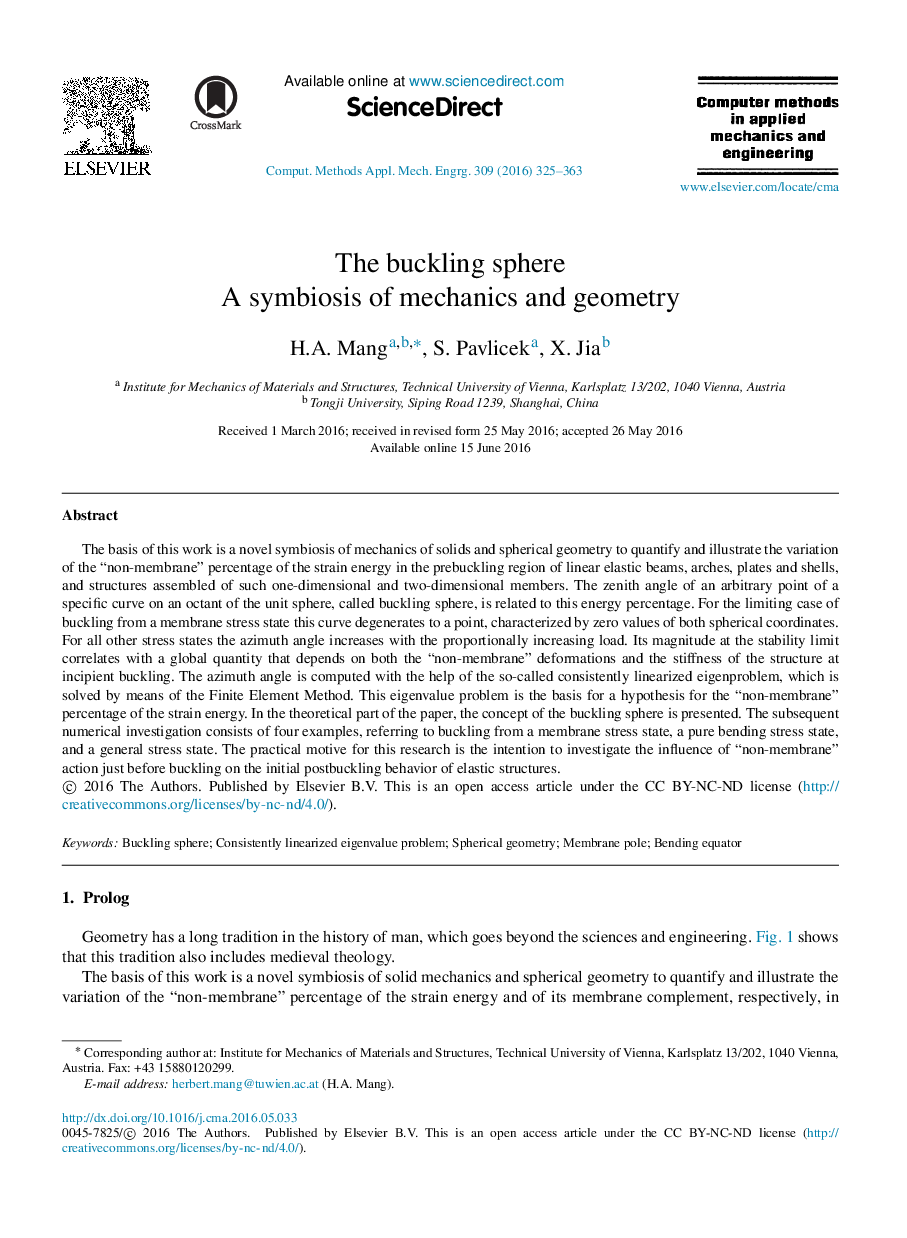| Article ID | Journal | Published Year | Pages | File Type |
|---|---|---|---|---|
| 6915867 | Computer Methods in Applied Mechanics and Engineering | 2016 | 39 Pages |
Abstract
The basis of this work is a novel symbiosis of mechanics of solids and spherical geometry to quantify and illustrate the variation of the “non-membrane” percentage of the strain energy in the prebuckling region of linear elastic beams, arches, plates and shells, and structures assembled of such one-dimensional and two-dimensional members. The zenith angle of an arbitrary point of a specific curve on an octant of the unit sphere, called buckling sphere, is related to this energy percentage. For the limiting case of buckling from a membrane stress state this curve degenerates to a point, characterized by zero values of both spherical coordinates. For all other stress states the azimuth angle increases with the proportionally increasing load. Its magnitude at the stability limit correlates with a global quantity that depends on both the “non-membrane” deformations and the stiffness of the structure at incipient buckling. The azimuth angle is computed with the help of the so-called consistently linearized eigenproblem, which is solved by means of the Finite Element Method. This eigenvalue problem is the basis for a hypothesis for the “non-membrane” percentage of the strain energy. In the theoretical part of the paper, the concept of the buckling sphere is presented. The subsequent numerical investigation consists of four examples, referring to buckling from a membrane stress state, a pure bending stress state, and a general stress state. The practical motive for this research is the intention to investigate the influence of “non-membrane” action just before buckling on the initial postbuckling behavior of elastic structures.
Keywords
Related Topics
Physical Sciences and Engineering
Computer Science
Computer Science Applications
Authors
H.A. Mang, S. Pavlicek, X. Jia,
